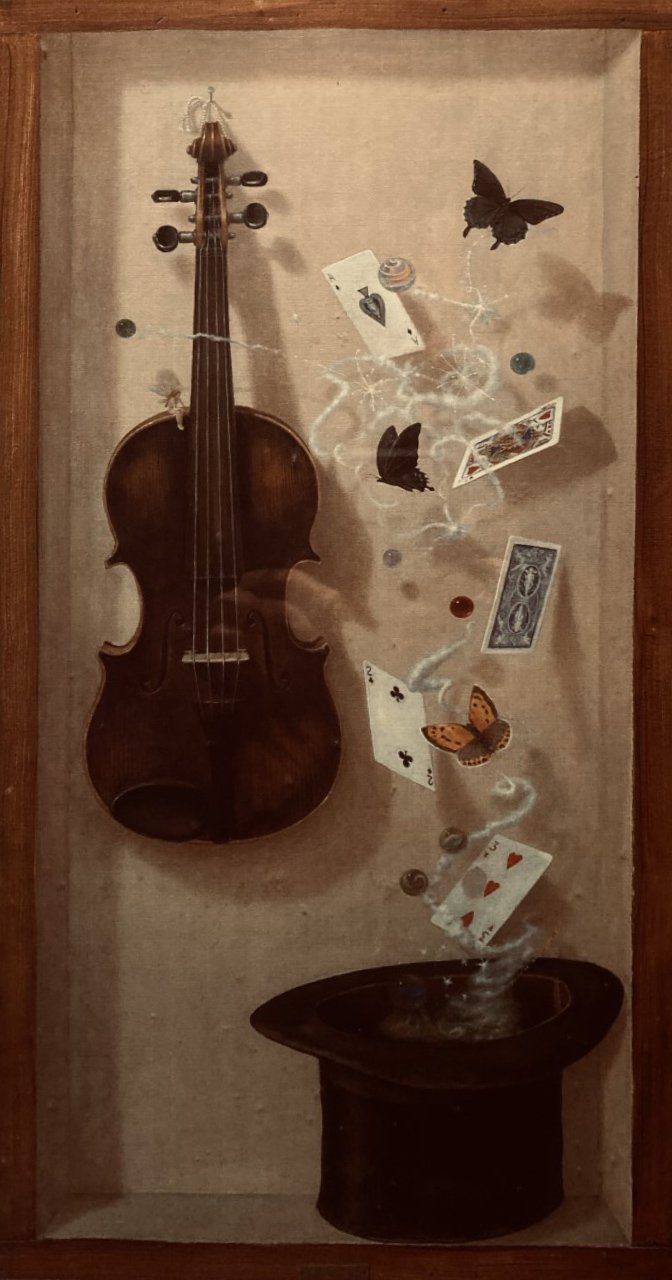Music, Myth and Magic
This imaginative trompe l’oeil painting titled “Music, Myth and Magic” by Leslie Folksman from Marshall, North Carolina presents a captivating ensemble of objects that blur the lines between reality and illusion. The centerpiece is a violin or viola, its wooden body and taut strings rendered with exquisite realism. Perched delicately atop the instrument is a small, whimsical fairy figure, adding an enchanting, fantastical element.
However, the most mesmerizing component is the top hat situated on the right side of the composition. From within this hat, a plume of swirling smoke emerges, as if from a magician’s trick. Defying gravity, playing cards and butterflies seem to magically levitate outwards, caught in a delicate, dream-like dance suspended in mid-air.
Other carefully crafted details include marbles or pearls scattered around, imbuing the scene with a sense of movement and dynamism. The overall atmosphere is surreal and whimsical, inviting the viewer to ponder the symbolic narratives and imaginative stories behind this peculiar arrangement of objects.
Folksman’s masterful trompe l’oeil technique creates an uncanny illusion of depth and tangibility that challenges the viewer’s perceptions of reality. The juxtaposition of the realistic violin with the fantastical fairy, levitating cards, and swirling smoke conjures a sense of enchantment and wonder, transporting the audience into a realm of pure imagination and delight.
The title perfectly encapsulates the three central themes and elements present in the composition:
Music is represented by the exquisitely rendered violin or viola that serves as the centerpiece, its wooden body and taut strings evoking the beauty and artistry of musical expression.
Myth manifests through the delightful fairy figure perched atop the instrument, introducing a fantastical, mythological dimension that sparks the viewer’s imagination and sense of wonder.
Finally, Magic is embodied by the top hat from which swirling smoke billows forth, accompanied by mysteriously levitating playing cards and butterflies that seem to defy the laws of physics, conjuring a sense of illusion and enchantment.
“Music, Myth and Magic” is an apt and evocative title that encapsulates the diverse themes Folksman has masterfully woven together in this trompe l’oeil tour de force. The name invites the viewer to embark on a fanciful journey where the realms of musical elegance, mythical folklore, and spellbinding magic intertwine in a captivating mélange of creativity and artistry.
One must appreciate all the cleverly rendered elements in this enchanting trompe l’oeil “still life”.


